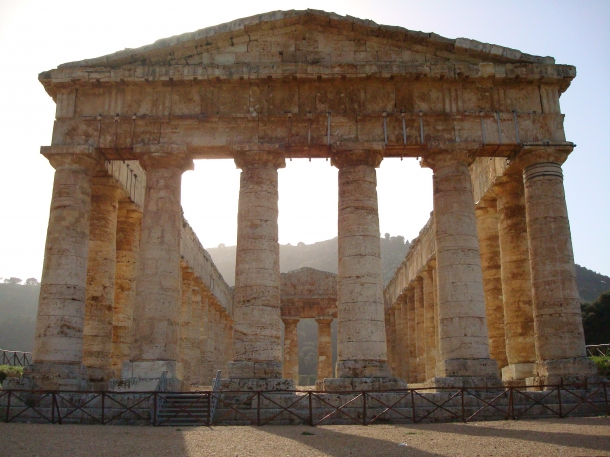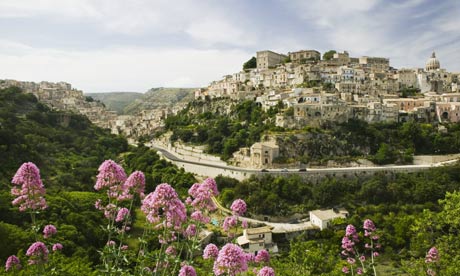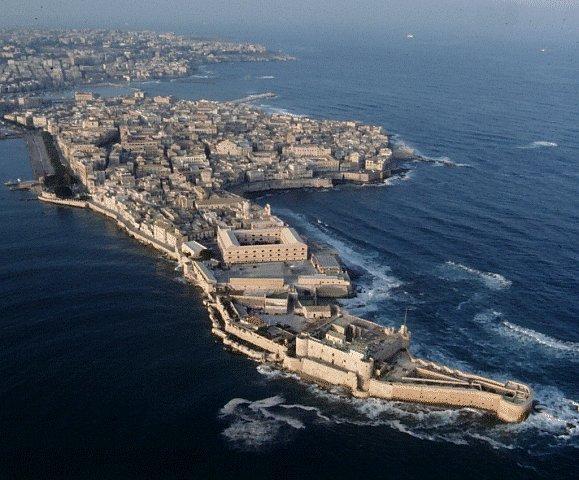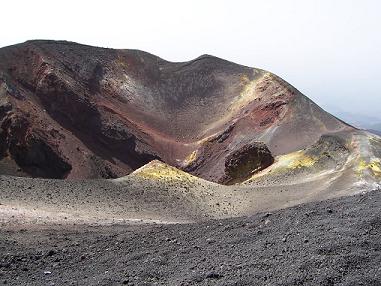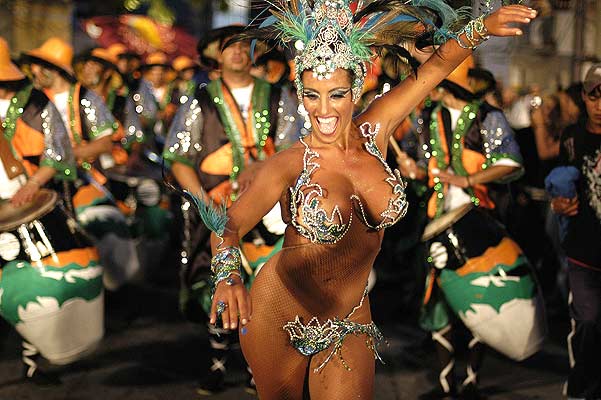Mention Sicily and what usually comes to mind is ‘Godfather’ Marlon Brando growling, ‘I’m gonna make him an offer he can’t refuse.’ But Sicily is much more than the mob, and the notion of ‘family’ extends well beyond the Costa Nostra—it might even include you.
Here are 7 reasons why a visit to Sicily may be hard for you to refuse:
1. Fascinating Cities
If you take the overnight ferry from Naples to Palermo (an ideal way to travel to Sicily and an adventure in itself), your boat will glide into Palermo, providing a first glimpse of Sicily as the sun rises over the surrounding mountains. Palermo is Sicily’s historic heart, and a hodgepodge of architecture reflects that history which is a story of one occupation after another, including all the major Mediterranean players from the Greeks and Romans to the Arabs, Normans, and Italians. But none of these unwanted visitors could undermine local pride, and even today, people consider themselves Sicilians first and Italians second.
Palermo is known as a chaotic city, but it’s worth braving the terrifying traffic to enjoy some of Sicily’s finest sights such as the splendid 12th c. Byzantine mosaics—colorful designs created with tiny pieces of glass specially crafted to reflect light. The most famous mosaics are found just outside of town in Monreale Cathedral where every inch of the upper walls and ceiling are covered with mosaic ‘pictures,’ including well-known Bible stories like Jacob’s Ladder, and Noah’s Ark, and a more obscure (but intriguing) one called ‘Drunken Noah in the Vineyard.’ The Cappella Palatina located within Palermo’s Norman Palace is another favorite mosaic treasure trove. Smaller and better lit than Monreale, the intensely colored mosaics sparkle in this intimate space making you feel as if you just walked into a jewelry box.
For a more down-to-earth experience, the Catacombs at Convento dei Cappuccini offer a gruesome collection of some 8,000 skeletal bodies. The dead are propped up in niches along the walls, and the best-dressed dudes are decked out in hats, ties, jackets, gloves, and even shoes!
Sicily’s second largest city Catania is often described as gritty—a city of faded glory with beautiful baroque buildings (many sporting a good coating of graffiti), and a good place to keep a watchful eye on your belongings. Having survived earthquakes and volcanic eruptions, as one guidebook puts it, ‘The most amazing thing about Catania is that it is still here.’
Catania is renowned for its fish, and La Pescheteria (the fish market) has a theatrical ambience. A tiered upper street functions almost like a balcony overlooking the boisterous market below. Old men gather here, leaning over a railing to observe and assess the daily performance. The fish vendors try to outshout each other, filling the air with 100+ decibel level Sicilian as they deftly wield foot long machetes to delicately filet fresh fish for their clients.
2. Remarkable Ancient History
Idyllically located Greek ruins at Segesta
The Greeks arrived in Sicily in 800 B.C., bearing gifts of great wealth along with art and architecture, and of course, magnificent Greek temples. Today, Sicily contains some of the best Greek ruins anywhere—even better than many of the ruins in Greece itself.
The Valley of the Temples is a good example: Agrigento was a major settlement during Greek’s Golden Age, and a series of 5th c. Greek temples line the ridge outside of the modern town. These majestic structures comprise one of the most important archaeological sites in the world. Stately Doric columns still stand tall, and the nearly intact Temple of Concord is considered second only to the Parthenon in Athens.
Another impressive temple is the unfinished temple at Segesta, a Greek gem idyllically situated on a mountainside surrounded by fields that come alive with colorful yellow and purple wildflowers in the spring. Segesta exudes an aura of mystery—perhaps because its history is largely unknown. No one knows why the temple was left unfinished (a roof was never added and the pillars were never fluted), or who the original builders were, although some believe they were Trojans exiled after the ill-fated Trojan War.
3. Charming Small Towns
Medieval castle at Erice
Sicily boasts a broad selection of sweet, small towns including the medieval village of Erice sitting on a rock-like mountain almost half a mile above sea level. The best viewpoint is from the medieval castle on the outermost tip of this mountain perch. A Temple to Athena once stood here, and much of the castle’s stone comes from this original temple. The sublime view encompasses green valleys, craggy mountains, and the brilliant blue Med gleaming in the distance.
Another small town favorite is Cefalù, the most popular resort on the northern coast of Sicily—a small town of narrow, winding streets sitting between the sea and a towering rock called ‘La Rocco.’ For a perfect day in Cefalù, eat lunch in the incredibly scenic main square sitting with the stunning stone cathedral in front of you and La Rocco looming in the background. After lunch browse the delightful shops and walk along the rocky coastline.
Ragusa is one of Sicily’s famous Baroque hill towns. The entire town was destroyed by an earthquake in 1693, but it was completely rebuilt in the latest style of the time, and the flowery, ornate buildings represent the best of 18th c. Sicilian architecture. Ragusa is actually divided into two towns separated by a deep ravine: Ragusa, the upper ‘modern’ town, and Ragusa Ibla, the lower old town. A series of steep stone staircases link the two providing a terrific walking opportunity with magnificent views at every turn.
4. The Magic of Ortigia
Magical Ortigia
Sicily has more than her share of magical places, but the tiny island of Ortigia, located at the southern end of the city of Siracusa, tops my list. I was hooked from the moment I rolled my wheeled luggage over the cobblestone streets into the atmospheric old town, and a fisherman repairing his nets called out a hearty ‘Bienvenutu a Ortigia’ (welcome to Ortigia).
Ortigia’s combination of bright blue sea and old world stonework creates a dreamy Venice-like ambience. The narrow lanes are lined with former palaces adorned with elaborate stone carved windows and delicate wrought iron balconies. The Piazza di Duomo, perhaps the most beautiful plaza in all of Sicily, boasts a lovely Baroque church that was once a Greek Temple of Minerva and still retains some of her ancient columns.
One of the most unusual sights in Ortigia is the Bagno Ebraico, Hebrew ritual baths dating back to 75 AD. The baths were in use until 1492 when Jews were expelled from Sicily. At that time, the banished Jewish community blocked the entrance to the baths with rubble in order to protect the sacred site. No one knew the baths existed until 1991 when renovations at the hotel next door revealed the old subterranean stairway. Still fed by natural springs, this is a mystical place where the devout once descended into rock-hewn pools—invoking a special prayer with each step.
5. Incredible Natural Beauty
Tiny Sicily abounds in natural splendor from the azure blue sea that is never far from view to the dramatic backdrop of interior mountain ranges. Fragrant orchards of orange and lemon trees lend both color and scent to this island that is truly bedda, the Sicilian word for beautiful.
Appealing spots include the resort town of Taormina perched on a mountaintop between Mt. Etna and the sea, and the small islands surrounding Sicily like the Aeolians, an archipelago of seven individual volcanic islands. But Sicily’s most respected natural wonder is the incomparable Mt. Etna.
Mt. Etna is the largest active volcano in Europe and has the longest history of documented eruptions in the world. Locals refer to Mt. Etna as the ‘good volcano’ because, unlike Mt. Vesuvius on the mainland that tends to explode without warning, Mt. Etna possesses better self-control emitting regular, lesser eruptions to relieve internal pressures. And when the lava flows, it moves very slowly giving people plenty of time to evacuate. During a recent eruption, one villager grabbed a lawn chair, a bowl of pasta, and a glass of wine—then he positioned himself in a prime spot to watch the lava dribble through his orchard and down the mountainside toward the ocean.
6. Fabulous Food
Typical Sicilian antipasto platter
Sicilian fare seems to take its cue from the colors of the Italian flag: red for tomatoes, white for garlic, and green for olive oil. But Sicilian cuisine is hardly that simplistic. Each of Sicily’s conquerors left their mark on the land—and in the kitchen. Sicilian cuisine glories in olives from the Greeks, pasta from the Romans, and major Arabic contributions like artichokes, eggplants, and sugar cane.
Antipasto delights with carponata (a uniquely Sicilian combo of eggplant, capers, olives, and tomatoes), and other veggies all steeped in the very best Sicilian olive oil. Heavenly pastas include Pasta alla Norma, a magnificent eggplant dish named for the heroine of an opera by Sicily’s favorite son, Vincenzo Bellini. Fresh fish is another treat including the simply prepared pesce spade (swordfish) that is thinly sliced, grilled with lemon and olive oil, and topped with piquant Sicilian capers. And even if you have sworn off sweets, ‘forgedda bout it,’ no one can resist the canolli and the lovely lime green cassata, a sugary cake filled with ricotta cream and topped with candied fruits.
No Sicilian meal is complete without wine, and you can choose from the up-and-coming red wines made from the Nero d’Avolo grape or stick with the traditional sweet Marsala. Known as a ‘healthy drink,’ Marsala wine became quite popular during America’s prohibition years. Sicily exported thousands of crates of the stuff to ailing Americans where it was marketed under the medicinal-sounding name ‘Marsala Tonic.’ The 18% alcohol remedy actually carried a label that read ‘Approved by the U.S. Treasury. Dosage: A small glassful twice a day.’
7. Incomparable Friendliness
Perhaps Sicilians are so friendly because they have a long history of welcoming strangers, or maybe living on a small island makes a person look forward to new faces. Whatever the reason, Sicilians surprised me with their heartfelt friendliness almost every day.
During my time in Sicily, I tried more than once to buy a single lemon, but the fruit vendors refused my money saying, ‘A gift, a gift!’ One day in Palermo, I conjured up my best broken Italian and asked a tiny elderly lady for directions to a bus stop. She not only led me in the right direction, but escorted me across a busy Palermo intersection. (No doubt she feared I would end up as roadkill if I attempted the crossing myself.) I watched in amazement as this little old lady walked right out into the speeding traffic, patting the air with her hand to halt the onslaught of vehicles. Miraculously, the traffic parted for her (and for me glued to her side) like Moses parting the Red Sea!
And in the town of Marsala, I was chatting with a young wine shop owner named Allessandro when he decided to lock up his wine shop and walk me to his favorite restaurant. I protested that he would lose business, but he said, ‘It is not good to work too much.’
Sicily is a perfect mix of ancient ruins, remarkable food, and gorgeous landscapes. But the real beauty of Sicily lies within—in her people and their special brand of genuine hospitality. As the Sicilian proverb says, ‘Tutti semu sutta lu celu.’ (We’re all under the same sky.) And nowhere does this feel more true than in Sicily.




